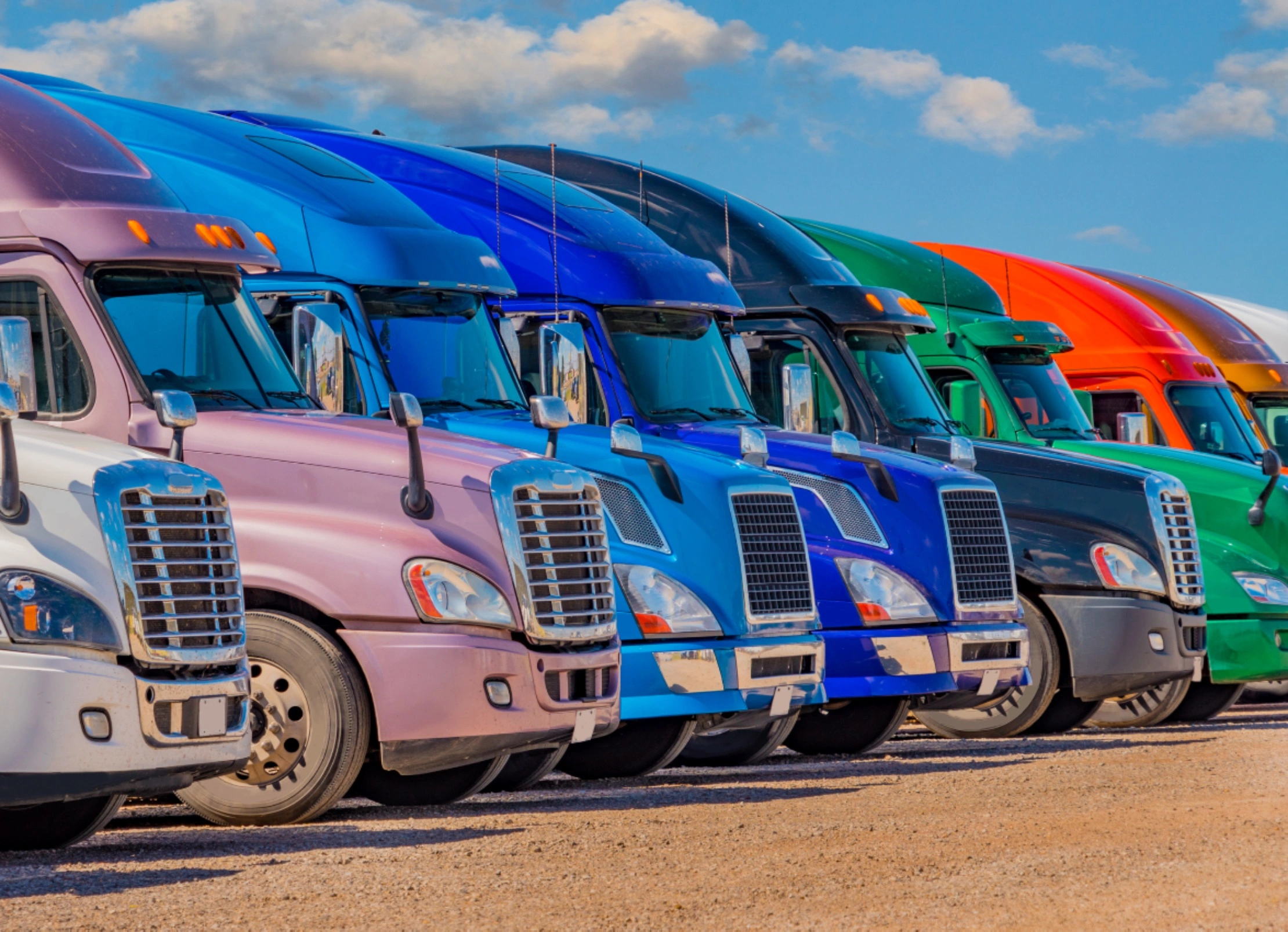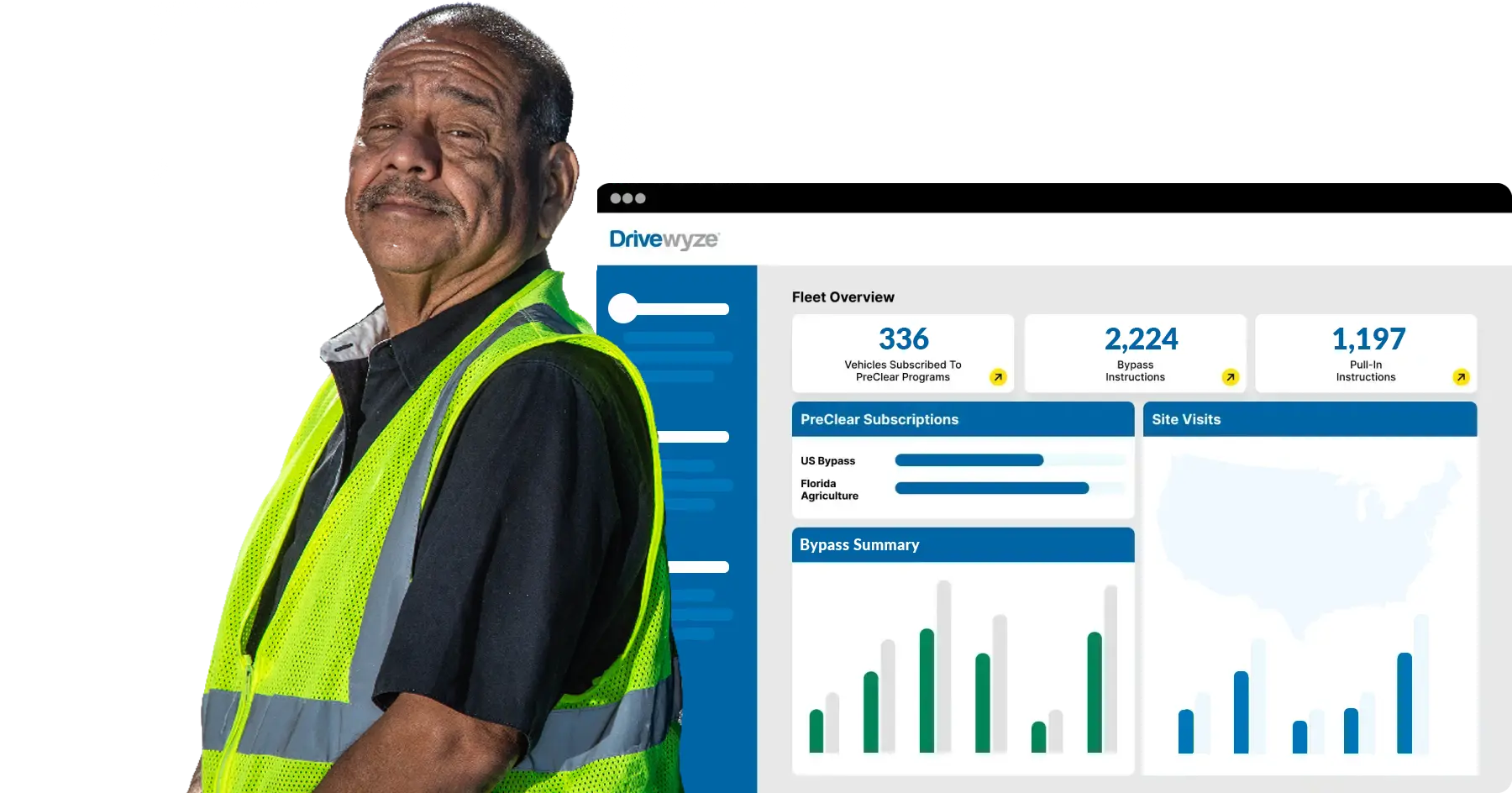Why Is Fuel Cost Important To Know?
When it comes to semi-trucks, the average cost of fuel (specifically, diesel prices) is crucial. Not only does it influence short-term cash flow, but it also significantly impacts overall profitability for owner-operators, trucking companies, and solo truckers.
As such, knowing your truck’s miles per gallon can help you:
- Save money
- Calculate CPM
- Optimize routes
- Keep an eye on carbon emissions
- Estimate overall operating expenses
Many providers offer truck drivers fuel cards and implement fuel efficiency programs to help manage the cost of diesel fuel and ensure their drivers stay within the budget.
Formula Used
Fuel Cost = (Distance / Fuel Efficiency) * Fuel Price
In this formula:
- Distance is the total distance traveled by the truck in miles.
- Fuel Efficiency is the number of miles the truck can travel per gallon of fuel.
- Fuel Price is the cost of one gallon of fuel.
- To calculate the fuel cost, you divide the distance by the fuel efficiency to determine the total number of gallons of fuel consumed. Then, you multiply that by the fuel price to obtain the total fuel cost.
Examples Of Semi-Truck Fuel Cost Calculations
| Distance (miles) | Fuel Efficiency (mpg) | Fuel Price ($/gallon) | Fuel Cost ($) |
|---|---|---|---|
| 500 | 6 | 3.50 | 291.67 |
| 1000 | 7 | 3.00 | 428.57 |
Ways to Save Fuel Costs
1. Drive Smoothly and Avoid Rapid Acceleration
Sudden starts, stops, and aggressive driving reduce fuel efficiency. Maintaining a steady speed and accelerating gradually can improve fuel economy by up to 33% on the highway and 5% around town.
Tip: Use cruise control on highways to maintain a consistent speed and avoid unnecessary fuel consumption.
2. Avoid Excessive Idling
Idling for long periods burns fuel unnecessarily. If you’re going to be stopped for more than 10 seconds, it’s more fuel-efficient to turn off your engine and restart when you’re ready to go.
Tip: Newer vehicles with stop-start technology can automatically turn off the engine when idle, helping save fuel.
3. Check Tire Pressure Regularly
Under-inflated tires create more rolling resistance, which makes the engine work harder and consume more fuel. Keeping tires properly inflated can improve gas mileage by up to 3%.
Tip: Check your tire pressure monthly, and inflate tires to the manufacturer’s recommended level.
4. Reduce Excess Weight
Carrying extra weight in your vehicle, especially in the trunk or roof, reduces fuel efficiency. Removing unnecessary cargo can improve fuel economy by 1-2%.
Tip: Avoid using roof racks or carriers unless necessary, as they create drag that reduces fuel efficiency.
5. Limit Use of Air Conditioning
Running the air conditioner can significantly reduce fuel efficiency, especially in stop-and-go traffic. At lower speeds, open the windows instead; at higher speeds, use the A/C more efficiently by keeping it on a moderate setting.
Tip: Park in the shade or use window shades to reduce the need for air conditioning.
6. Plan Efficient Routes Ahead of Time
Combine errands and plan your trips to avoid backtracking and unnecessary miles. Use apps like Apple Maps, Google Maps, and Waze to check traffic and find the most fuel-efficient routes.
Tip: Avoid driving during rush hours to minimize time spent idling in traffic.
7. Perform Regular Maintenance
Keeping your car well-maintained improves fuel efficiency. This includes regular oil changes, replacing air filters, and keeping the engine tuned. Fixing major issues, like a bad oxygen sensor, can improve fuel mileage by up to 40%.
Tip: Use the recommended grade of motor oil to optimize engine performance.
8. Use High-Quality Fuel
Premium fuels may not improve mileage in every vehicle, but fuels with detergent additives can help keep engines cleaner and more efficient.
Tip: Use the fuel grade recommended by your vehicle’s manufacturer.
9. Optimize Speed
Fuel efficiency usually peaks at 50–60 mph. Driving faster significantly reduces efficiency. For every 5 mph above 50 mph, fuel economy can drop drastically.
Tip: Stick to 65 mph or below on highways to save fuel.
10. Carpool or Use Public Transportation
Carpooling or using public transit reduces the number of vehicles on the road and spreads fuel usage across more people.
Tip: Use ride-sharing apps or coordinate with coworkers for daily commuting.
Factors That Affect Fuel Prices
Fuel prices are influenced by a variety of factors that can fluctuate over time. Understanding these factors can help you anticipate changes in fuel costs and better plan your budget. Here are some of the key factors:
1. Crude Oil Prices
Crude oil is the base ingredient of fuel. Its price is influenced by global supply, demand, and geopolitics. When oil prices rise, fuel prices typically follow.
2. Supply and Demand
Basic market forces: if demand rises (like during travel seasons) or supply falls (due to storms or refinery issues), fuel prices go up.
3. Refining Costs and Profits
Turning crude oil into usable fuel requires refining. Higher operating or equipment costs at refineries can increase fuel prices.
4. Distribution and Marketing Costs
After refining, fuel must be transported, stored, and sold. All these steps add costs that influence pump prices.
5. Taxes
Local, state, and federal taxes contribute significantly to fuel costs. These vary widely by region and are often adjusted annually.
6. Exchange Rates
Oil is traded in U.S. dollars globally. Currency fluctuations affect the purchasing power of countries, impacting what they pay for fuel.
7. Government Policies and Regulations
Subsidies, environmental laws, and international tariffs can all affect fuel production and pricing. Stricter policies may increase costs.
Frequently Asked Questions (FAQs)
What is fuel efficiency?
Fuel efficiency is a measure of how many miles a vehicle can travel per gallon of fuel.
How do I find the fuel efficiency of my truck?
You can find the fuel efficiency of your truck in the vehicle’s specifications or by calculating it based on past fuel consumption.
How can I improve my truck’s fuel efficiency?
To improve your truck’s fuel efficiency, you can maintain proper tire pressure, reduce idling time, use cruise control, avoid aggressive driving, and keep your truck well-maintained with regular servicing.
Is the fuel price per gallon constant?
No, fuel prices can vary depending on location, time, and other factors. It’s essential to use the current fuel price when calculating the cost.
Can I use this calculator for other types of vehicles?
Yes, you can use this calculator for other types of vehicles as long as you know the distance, fuel efficiency, and fuel price. Just keep in mind that the results may not be as accurate for vehicles with significantly different fuel efficiencies than trucks.
Does Drivewyze provide other cost-saving trucking calculators?
Yes. We’re committed to helping truckers, owner-operators, and fleet managers save money and time, which is why we provide a number of trucking calculators.
- Truck Depreciation Calculator
- Semi-Truck Gear-Ratio & Speed Calculator
- Truck Driver Per Diem Calculator
- Semi-Truck Loan Calculator
- Trucker Salary Calculator
- Semi-Truck Tire Pressure Calculator
- Semi-Truck Axle Weight Calculator
- Semi-Truck Maximum Payload & Towing Capacity Calculator
Learn more about our trucking industry resources today!
To calculate cost per mile for fuel, simply take the current price of a gallon of gas and divide it by your vehicle’s miles per gallon.
1. Find the Distance of the Trip:
- Use a map service (like Google Maps) to find the distance of the trip.
- Let D be the distance of the trip in miles or kilometers.
2. Know Your Vehicle’s Fuel Efficiency:
- Find your vehicle’s fuel efficiency from its manual or an online resource. It’s usually measured in miles per gallon (MPG) or kilometers per liter (KPL).
- Let E be the vehicle’s fuel efficiency, in MPG or KPL.
3. Get the Current Fuel Price:
- Find the current fuel price at the gas station or online.
- Let P be the price per gallon or price per liter.
4. Calculate the Amount of Fuel Needed:
- Use this formula to find out how much fuel your trip will need:
Fuel Needed = Distance of the Trip ÷ Fuel Efficiency.
This gives the Fuel Needed in gallons or liters.
5. Calculate the Total Fuel Cost:
- Multiply the fuel needed by the fuel price to get the cost of the trip:
Fuel Cost= Fuel Needed×Fuel Price
This gives the total Fuel Cost for the trip.
Find out how CalArk cut costs and improved fleet efficiency with Drivewyze.
Discover the strategies and technology that helped optimize their operations, and how you can do the same.

Ready to Get Started?
Learn how Drivewyze can improve commercial transportation safety and efficiency

